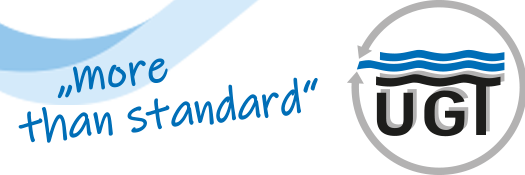February 7th the first part of the international lysimeter workshop was a great success.

Christina Siebe introduced the program and the institute at UNAM. Peter Cepuder from the Institute of Hydraulics and Rural Water Management (IHLW), University of Natural Resources and Life Sciences, Vienna, Austria presented his own research results at the lysimeter plant at the agrometeorological station in Groß-Enzersdorf which was founded in 1983.
Focus was the work on wind effects on the quality of the measurement results and the actual focus on isotopic measurements. Further on he introduced the lysimeter research group in Europe and the possibility to join this group from all over the world. Peter Cepuder is the actual president of the network.
Our managing director Sascha Reth presented the latest developments on lysimeter technique and compared different soil drilling and sampling methods. Here the question “what are soil samples used for?” important for the right solution.

In the following the new lysimeter instrumentation was discussed and presented to the auditorium. The participants were able to follow the construction progress after a visit of the installation area. It is visible already that the time for the key over of the first Mexican lysimeter station is short.
The second day at February 8th was mainly focused on the research aspects in the upcoming lysimeter experiments and the former work on it. Christina Siebe started with a presentation about the research on the critical zone observatory Valle del Mezquital. We learned that 90.000 ha will be irrigated with 52 m³/s wastewater of Mexico City.

The aquifer in this area will be filled by 6 m³/s. Soil properties, crop quality and microbial biomass were in the focus of the observations. Soils of the Valle del Mezquital will be excavated at transported to the new lysimeter station at UNAM. Blanca Prado Pano introduced the fate of atrazine in wastewater irrigated agroecosystems in this area.

A big task will be the research on the degradation of the herbicides under field conditions under the help of lysimeters.
Rocio Jetzabel Alcántara Hernández gave a presentation of her work with the title Microbial insights into the attenuation of pollutants in the Mezquital Valley. In column experiments several different applications of waste water – with and without atrazine – were performed in traditionally and intensively managed soils.

Additional experiments from column and field experiments in the Mezquital Valley were presented by Kathia Lüneberg.

Hereby the water flow paths were identified as the hotspots for the dissemination for antibiotic resistance in soil. In the further presentation she pointed out the big advantage of the new lysimeters for the complete research on all this discussed topics.
Jan Siemens of the Department of Soil Science and Soil Conservation, University of Gießen, Germany, gave a remote presentation about the drainage and leaching losses of nitrogen after introducing into a continuous paddy-rice crop rotation in a lysimeter experiment.

One of the conclusions of his lysimeter experiment was that maize as a crop intermediate could help to save the net amount of the irrigation water in this paddy fields. Straw mulching could not be used for the reduction of the water loss, but it helps to reduce NO3- concentrations
This workshop was a great success for all participants and highlighted the big effort to work with different working groups and disciplines on lysimeters.
Thanks to all participants and for the perfect organization!










